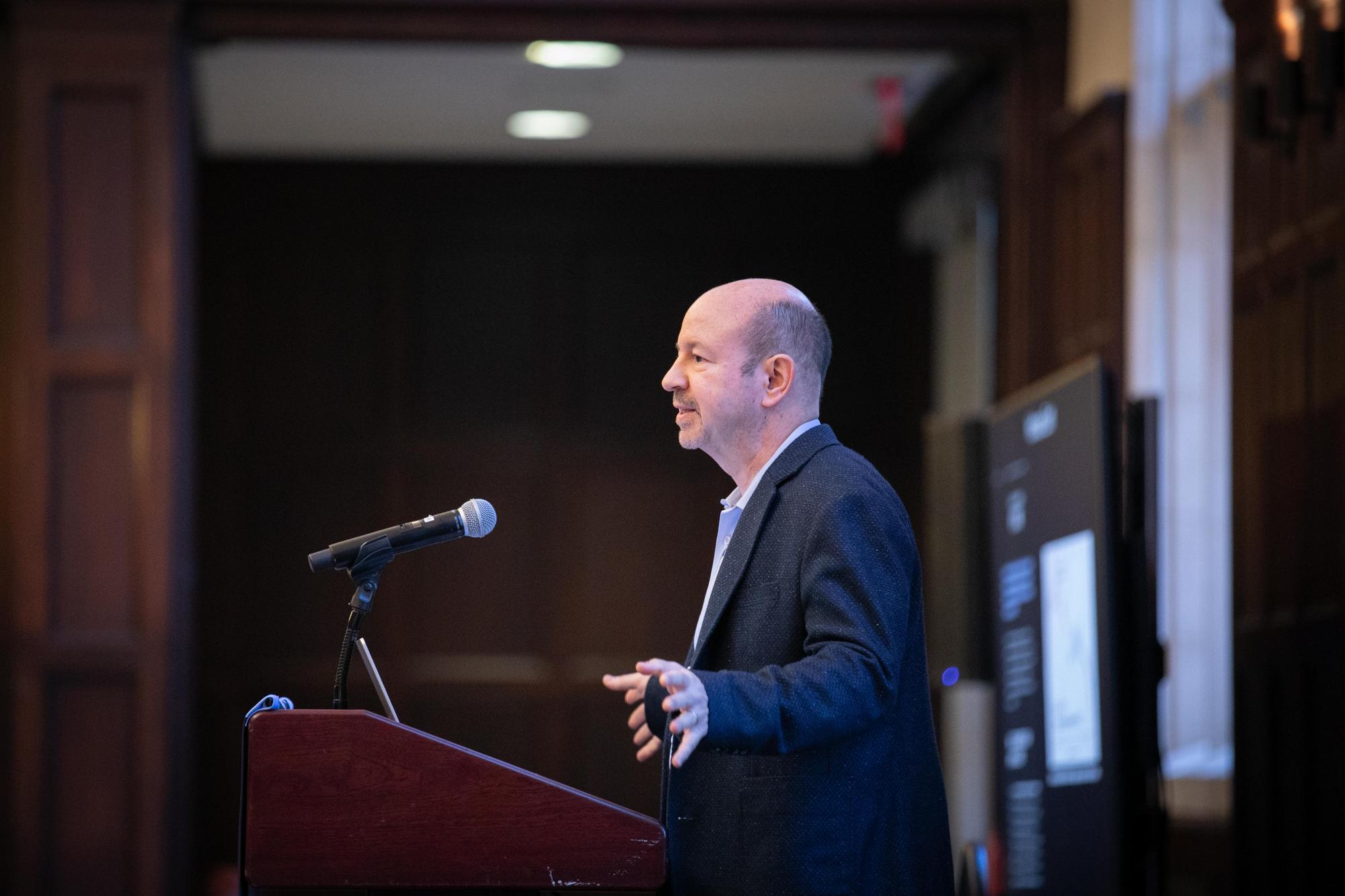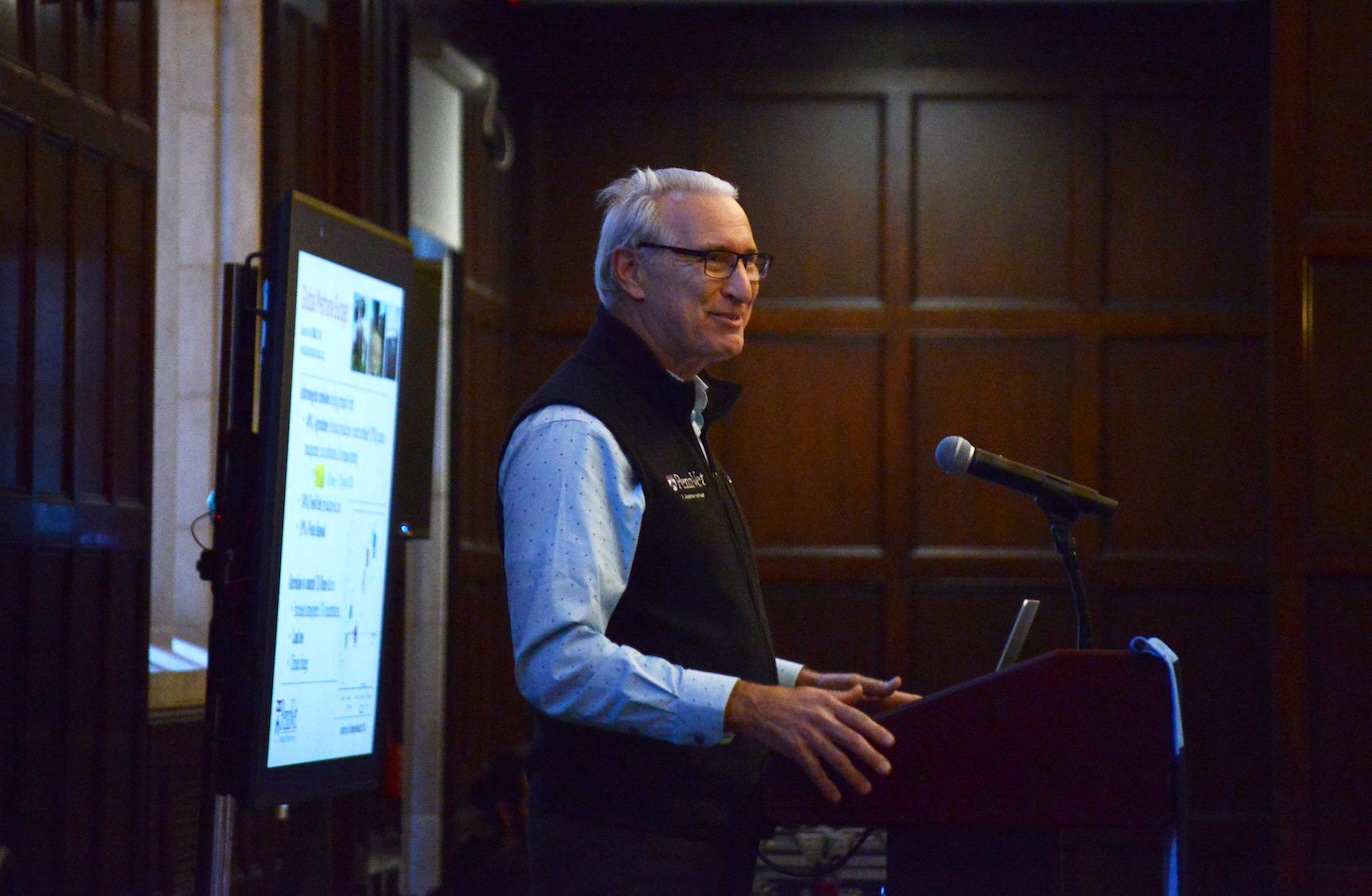Collaborating on agricultural climate solutions, from plants to ...
When Doris Wagner looks at her fellow faculty members in the Department of Biology, she sees a strong group of faculty working on plant biology, complementing her own work coming up with an epigenome approach to increasing drought resistance in crops. Brent Helliker and Brian D. Gregory are researching what makes sorghum more drought-resistant than corn, Corlett Wood is working on plants that acquire nitrogen from bacteria, and Scott Poethig is studying changes between young and adult leaves. And there’s Aman Husbands looking at robustness in leaf development and Kimberly Gallagher examining how different parts of the plant communicate with each other to coordinate responses to environmental signals.

They’re specifically interested in how plants can address challenges stemming from climate change, such as food security, fresh food and other challenges specific to urban settings, and biodiversity. These seven researchers are all part of the Penn Plant Adaptability and Resilience Center (PlantARC), a center within the School of Arts & Sciences (SAS) that launched in September.
The Center recently held its first event, a symposium called Climate Solutions for the Living World that featured faculty from SAS along with the Weitzman School of Design, Perelman School of Medicine, School of Veterinary Medicine, and School of Engineering and Applied Science.
Wagner, the founder and director of PlantARC, said one of the goals of the event was “to identify potential intersection points where we could join forces.” She said at the event, “We are all seemingly on the path to going from fundamental research to actually applying solutions in the real world, and that is fantastic to hear.”
Wagner and Gallagher, chair of the Department of Biology, see many reasons why now is the right time to start the Center. Wagner said tools and techniques are becoming available that allow biologists to switch from researching one species to another much more easily, and she pointed to a “dire need” for climate solutions.
“We’re in a time where we have an excellent group of researchers with complementary knowledge joining forces in PlantARC. There is a need, and we can translate much, much more readily,” Wagner said. Gallagher added that PlantARC came together well because of Penn’s In Principle and Practice strategic framework and its commitment to leading on great challenges of our time, including climate and data.
An exciting development PlantARC will bring to Penn is phytotrons, or growth chambers that can be adjusted for temperature, humidity, light, and carbon dioxide levels. That means, Wagner said, they could imitate any climate in the world.
Looking to agriculture to address climate changeThe Climate Solutions for the Living World symposium focused on climate change effects on aquatic and terrestrial ecosystems; challenges of urbanization and climate on food, water, air, and health; energy and climate communication; and agriculture. Climate scientist Michael Mann, Penn’s newly appointed vice provost for climate science, policy, and action, gave the keynote address.

Wood, a PlantARC member, discussed ecological approaches to understanding the benefits and costs of multispecies interactions between plants, nitrogen-fixing bacteria, and pathogens. Speaking before a few talks on agriculture, Wagner said that PlantARC is using basic research for sustainable food security, reducing the contribution of agriculture to greenhouse gas emissions, and preventing land-use changes, which exacerbate climate change.
For example, her lab is working on methods to increase yield by delaying flowering when it’s not wanted, as in basil or lettuce, and accelerating it in other cases, such as fruit trees. Wagner also talked about implementing her drought resistance techniques in rice, to support dry or semi-dry rice cultivation since rice paddies are a source of methane emissions.
Penn Vet Dean Andrew M. Hoffman also talked about methane, which has 28 times the global warming potential of carbon dioxide, in his talk. He noted that 40% of anthropogenic methane emissions come from livestock.
Hoffman highlighted how Penn Vet researchers are working to decrease enteric methane from farm animals and non-enteric methane from landfills. For example, Dipti Pitta has shown that non-invasively introducing a probiotic in newborn cattle can block the methane-producing organism; Eduardo Rico is interested in using black soldier flies as a feed instead of soybean, which is land-intensive; and Brianna Parsons is studying the circularity of agriculture in Gambia.
“We recognize that, as stewards of both public health and of animal health, we have a responsibility to participate in global challenges, and of course climate change is one of those,” Hoffman said. He added that when people ask about the connection between veterinary medicine and climate change, he points to the impact of climate change on three things: health, biodiversity, and agriculture and food.
Cherie Kagan, the Stephen J. Angello Professor in Penn Engineering, talked about the work of the Internet of Things for Precision Agriculture (IoT4Ag), a National Science Foundation Engineering Research Center she directs. Its three research thrusts are agricultural sensor systems, communication and energy systems, and agricultural response systems.
One kind of sensor the IoT4Ag is trying to build is biodegradable, wireless sensors that can be embedded in the soil. Kagan explained that they started with soil moisture sensors before moving to measuring nitrate, phosphate, and ammonium. IoT4Ag builds sensors on biodegradable paper, Kagan said, comparing the low-cost technology to screen-printing T-shirts.
“We’re really delivering people, places, and the internet of things to build a food-, energy-, and water-secure future,” she said.
Closing out the symposium was Thabo Lenneiye, managing director of the Sustainable Agriculture Fund at the Kleinman Center for Energy Policy in the Weitzman School of Design. Noting that supplying electricity through only solar or only wind would require a vast amount of land, she said, “The way that we’re building renewable energy right now is not working.”
Lenneiye highlighted a few examples of Penn faculty research the fund is supporting, such as Arthur van Benthem and Prakash Mishra evaluating the European Union’s common agricultural policy, Domenic Vitiello and Allison Lassiter measuring the carbon effects of urban orchards, and her own work with Eugenie Birch mapping regenerative agriculture practices in Kenya, Zimbabwe, and Ethiopia. Earlier in the day, Vitiello had discussed his work on urban agriculture.
“Agriculture is both vulnerable to climate change and a significant contributor to greenhouse gas emissions,” Lenneiye said. “The global recognition of sustainable agriculture’s role in addressing climate change is growing.”













































